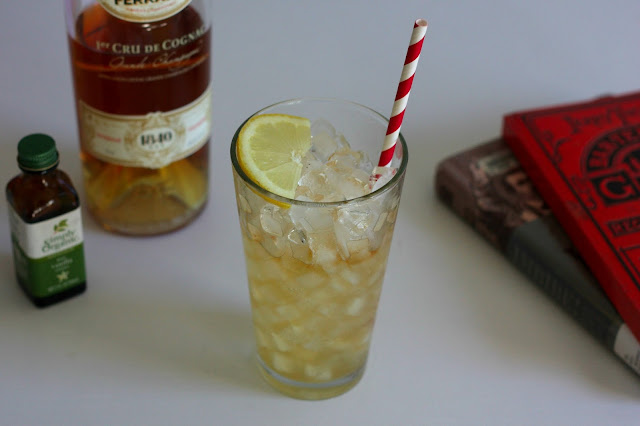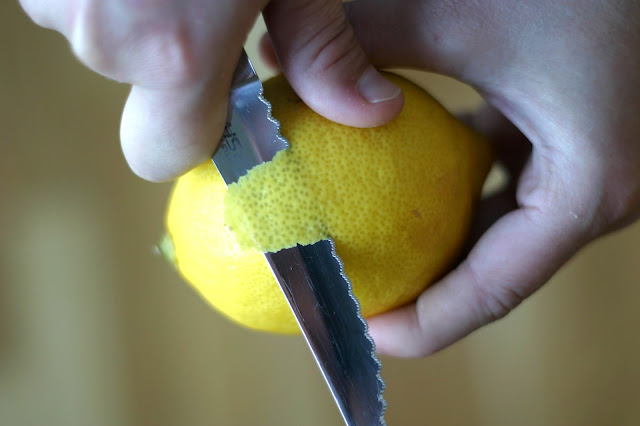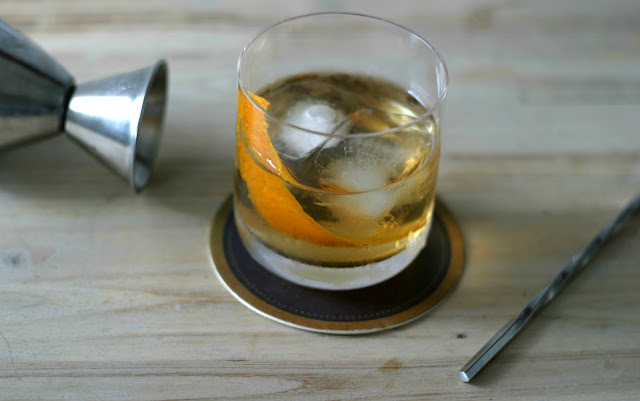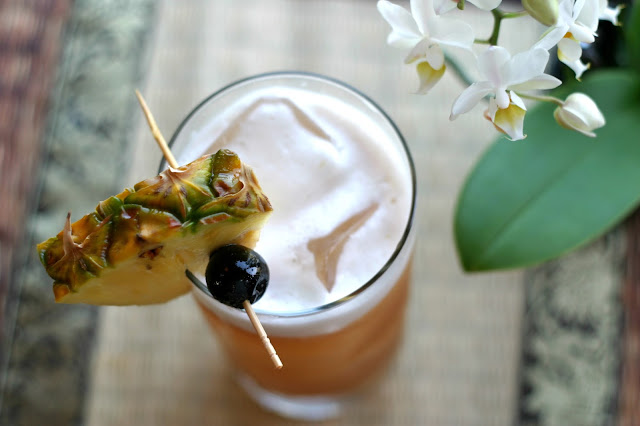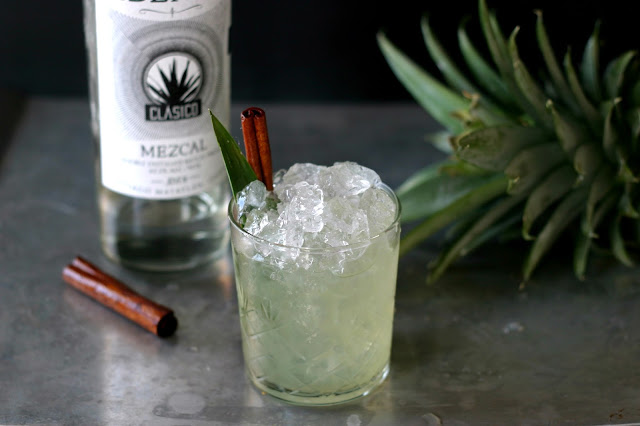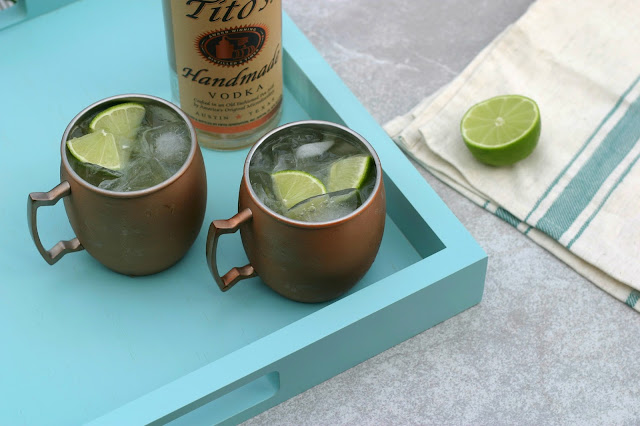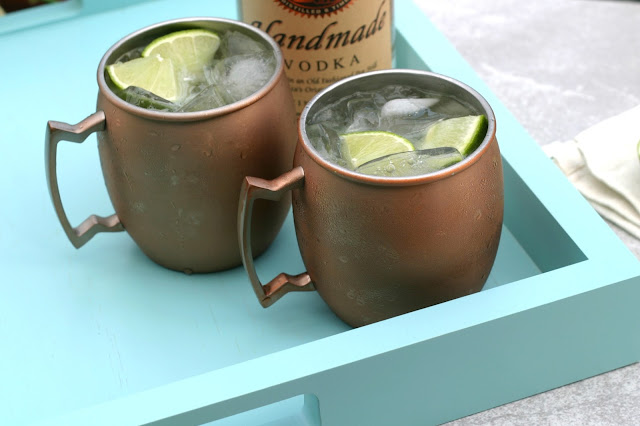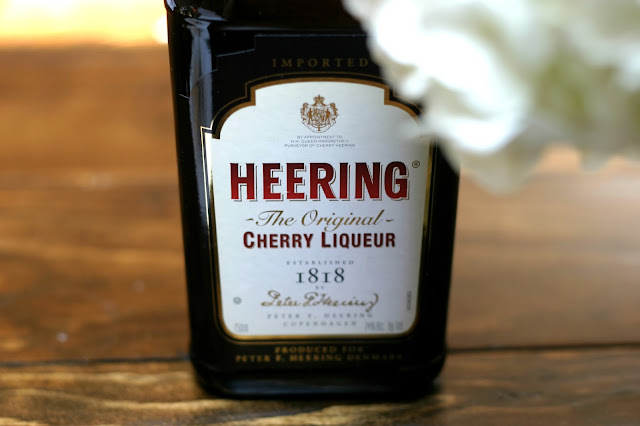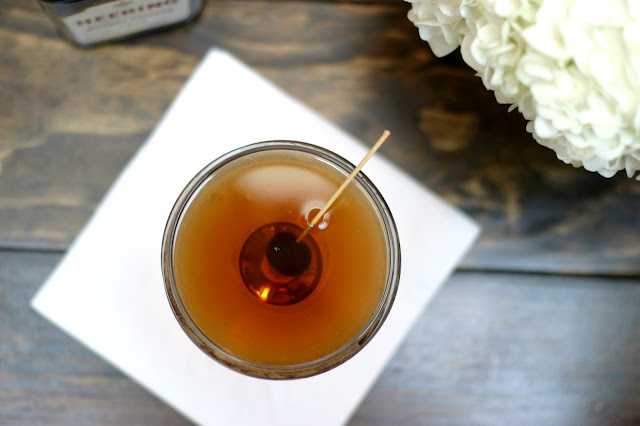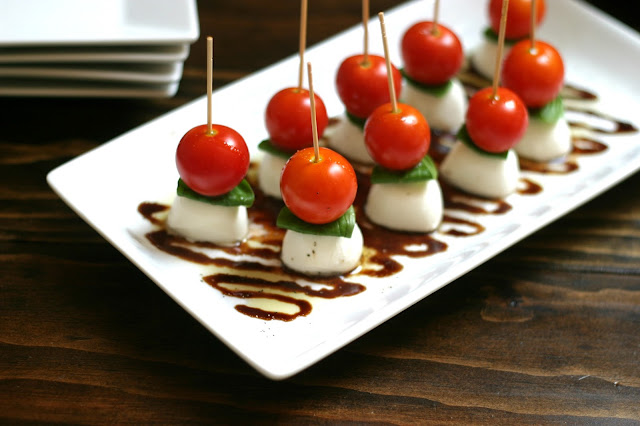It wasn't that long ago that my bar consisted of nothing but rye, vodka, gin, dry vermouth, and a couple of tooth-achingly sweet liqueurs. The fabulous bars in Boston slowly introduced me to the world of craft cocktails, but I didn't think I'd ever be able to replicate most of them at home without spending a fortune on liquor. Now I know that this isn't the case; while you'll probably never be able to make everything a great bar can make, you can equip yourself with a lot of really versatile spirits that will give you tons of options.
As I wrote when I introduced Batavia Arrack, the cocktail that changed my mind was the Battle of Trafalgar. This recipe, invented by Aaron Butler at Russell House Tavern in Harvard Square, was so unique and delicious to me and GG that we decided we wanted to be able to make it at home. I searched online for the recipe, assuming I wouldn't find it, but there it was on Cocktail Virgin Slut, straight from Butler himself. Lime juice and honey simple syrup, check. I knew of Pimm's No. 1, and I was excited to see it playing such a central role in a cocktail not involving fizz and fruit. St. Germain was another familiar ingredient, and though I'm not sure we owned a bottle, I had definitely been wanting one. And then there was the Batavia Arrack, entirely foreign at the time but now a familiar sight on our bar. Buying all three was pricey, but they lasted a really long time, and we made a lot more than just Battle of Trafalgars with them.
What is it about this cocktail that was so good that it induced two cheapskates to spend so much on liquor? We just love the flavor. It's deep and sophisticated, with hints of bitter orange and spice and honey-sweet citrus. I think it's a truly brilliant example of cocktail craftmanship.
History: As I said, this cocktail was invented by Aaron Butler at Russell House Tavern. The name refers to a famous naval battle fought by the British against the French and Spanish during the Napoleonic Wars in 1805. It was a great victory for the British, led by Admiral Lord Nelson, whose statue now stands in Trafalgar Square in London. Unfortunately Nelson took a bullet wound during the action and died not long after.
Butler was an English History major, so he was familiar with all this when he named the cocktail. The Pimm's No. 1 is a very British liqueur, and the lime and Batavia Arrack evoke thoughts of the Royal Navy. I can't really explain why, but I've always thought the name was a perfect fit. It tastes like a cocktail Lord Nelson might have enjoyed after a victory.
Butler was an English History major, so he was familiar with all this when he named the cocktail. The Pimm's No. 1 is a very British liqueur, and the lime and Batavia Arrack evoke thoughts of the Royal Navy. I can't really explain why, but I've always thought the name was a perfect fit. It tastes like a cocktail Lord Nelson might have enjoyed after a victory.
Battle of Trafalgar
1 1/2 oz. Pimm's No. 1
3/4 oz. St. Germain
3/4 oz. Batavia Arrack
1/2 oz. honey simple syrup*
1/2 oz. lime juice
Combine all ingredients in a shaker with ice and shake until chilled. Strain into a rocks glass. Twist an orange peel over the cocktail and rub it along the sides of the glass, then discard. Toast Lord Nelson and enjoy.
*Honey simple syrup: combine equal parts water and honey and heat on the stove or in the microwave until honey is dissolved. Let cool before use.
*Honey simple syrup: combine equal parts water and honey and heat on the stove or in the microwave until honey is dissolved. Let cool before use.
Recipe from Cocktail Virgin Slut, courtesy of Aaron Butler.





